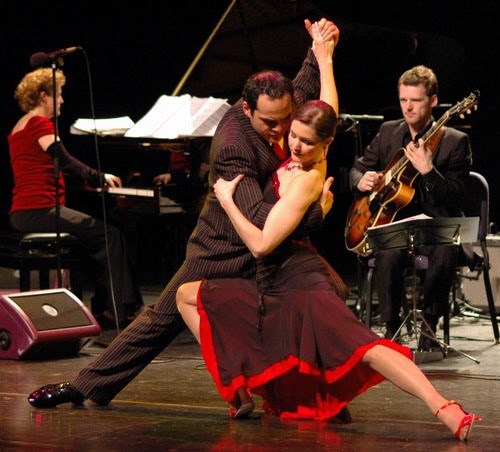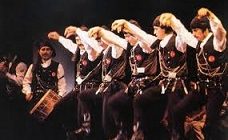Argentina is famous for the Tango. But where did tango music and dance originate? This article runs you through basic history of the tango in Argentina.
The Tango in Argentina has a complex history and the exact origins of both the name and the dance are uncertain.
However, one thing that is certain is that the origin of the tango in Argentina was strongly influenced by black African culture in the 1800′s. African slaves were first brought to Argentina in the 1770′s to either serve as domestic servants in Argentine homes or, to carry out hard labour on the haciendas. Slavery was finally abolished in Argentina in 1853. A census carried out in Argentina in 1778 recorded that 30% of people living in Buenos Aires were African.
Consequently, the tango in Argentina came to refer to a meeting place where freed slaves and working slaves gathered to dance.
The tango further evolved to reflect the beautiful diversity of dance and music from the influx of immigrants arriving in Argentina in the late 18th century and the early 19th century. The tango was primarily danced by individuals of poor backgrounds who had emigrated to Argentina for economic purposes and, who were hoping to raise enough money to bring their families at a later point to join them.
The separation from wives and female partners during their stay in Argentina is a key element of the tango which exudes passion, desperate longing and sexual innuendo. The early tango was accompanied by mixes of African drumming rhythms, Spanish and Italian melodies. As the musical accompaniment evolved, an instrument known as a bandoneon (a type of small accordion) was introduced which is now a key element of the Tango sound.
It is written that the tango venues were also attended by young, poor, indigenous men from Argentina who eventually took the dance back to the slaughterhouse district of Buenos Aires, where it was introduced to poor dance venues, bars and brothels. It was at this point that the dance further evolved to include Argentine milonga music, which is a fast paced polka. Hence the steps and the pace of the dance quickened.
Unsurprisingly, high society in Argentina looked down on the tango and the individuals dancing it. The dance was considered vulgar and distasteful – particularly in view of its links to brothels and prostitutes. However, some of the sons of such families engaged in the tango and at the beginning of the twentieth century it traversed class and spread across Argentina and then to Paris with wealthy geographically mobile families. By the early 20th century the dance had become and international success on a global platform with individuals in New York, Paris and London being enthralled by this exciting new innovation. 1913 became known as the year of the tango and when it returned to Argentina it came back as a refined global hit.
Even high society in Argentina came to view this beautiful dance emerging from their country with love and national pride.
Argentina will always be famous for the tango; and what a great opportunity someone would have if they were able to visit Argentina and see the tango danced in its country of birth!





